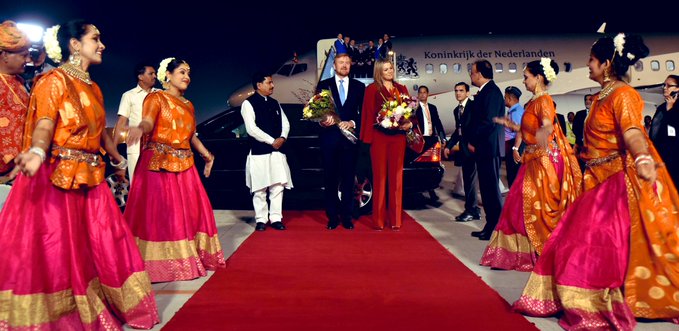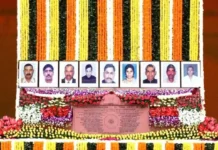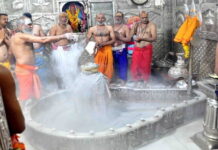NEW DELHI/PATNA: The centuries-old Patna Collectorate, endowed with high ceilings, huge doors and hanging skylights, is one of the last surviving signatures of Dutch architecture in the Bihar capital whose fate currently hangs in the balance.
Patna, a historic city with over 2,500 years of uninterrupted civilisation, has a deep connection with the Netherlands going as far back as the 17th century, and the ongoing visit of the royal Dutch couple to India has made many local residents rue the “poor upkeep” of the “shared architectural heritage” of the two countries.
Octogenarian J K Lall, a veteran architect, and convener of INTACH Patna Chapter said Netherlands King Willem-Alexander and Queen Maxima are on their first state visit to India, but how many even know about Patna’s Dutch connection.
“The king and queen visited Bombay yesterday and Gateway of India was lit up with a Dutch theme to celebrate the ties between the two countries. And next they visit Kerala which has a significant Dutch heritage. Patna could have been on their itinerary, if only we had preserved our heritage, instead they are either facing the axe or kept poorly,” he rued.
The Bihar government in early 2016 proposed to demolish the Patna Collectorate, parts of which are Dutch-era, including the iconic Record Room which has a colonnaded facade with Tuscan columns. The building also featured in 1982 Oscar-winning film ‘Gandhi’.
After hearing two PILs filed by the Indian National Trust for Art and Culture (INTACH), the Patna High Court recently stayed the proposed demolition of the government complex while restraining the state authorities from “causing any harm to the collectorate building until further orders”, bringing some relief among the heritage lovers.
“Patna is one of the historic cities globally, and the collectorate along with Patna College’s main administrative building, parts of the Government Press at Gulzarbagh and a few other buildings, should have been long back tied into a Dutch tourism circuit, but we allowed them to either decay ingloriously or slip into obscurity,” Lall said.
Kolkata-based photographer Rajiv Soni, who grew up in Patna said, the visit of the Dutch royals should make us revisit the “forgotten Dutch history of our city” and Patna should also recall and thank the then Ambassador of the Netherlands, Alphonsus Stoelinga, who had written a letter to Chief Minister Nitish Kumar three years ago to spare the demolition as preserve it as a “shared heritage”.
Stoelinga, now back in the Netherlands, is part of the Dutch delegation accompanying the visiting king and queen, and recently his book ‘India: Land van de Toekomst’ was launched in Amsterdam, according to an official at the Dutch Embassy.
In his 2016 letter to Kumar, he had said, “I came across reports about the possibility of this shared built heritage of India and the Netherlands being demolished anytime.”
“I sincerely believe that this built heritage depicting the Indo-Dutch history can be restored and alternate uses can be planned. I am writing this letter to appeal to you to list the complex of buildings as per the norms of the state archaeological department,” Stoelinga said.
Aditya Jalan, a heritage enthusiast and a core member of a civil society-led movement ‘Save Historic Patna Collectorate’ started in April 2016, said Patna being a historical city had been on the itinerary of so many royals and VVIPs who have toured India, from British Raj to post-independence.
“In 1875, then Prince of Wales VII visited Patna, and then Prince of Wales Edward VIII paid a visit in 1921 and he was given a royal reception in the Maidan (now Gandhi Maidan). I wish we had kept our Dutch history in good shape and celebrated it, and I wish the Dutch royal couple had visited our city. Imagine the kind of spotlight it would brought to shared heritage sites like the Collectorate,” he told PTI.
Such royal and VVIP visits also motivate local people to appreciate their “own heritage” which they take for granted or become completely indifferent to.
“There will be future visits by many dignitaries, and we may have missed this Dutch heritage bus but we can always prepare and hop on to the next bus,” he said.
Jalan, a scion of the iconic Quila House family of old Patna, whose great grandfather and grandfather have hosted viceroys and vicerines and various influential and political personalities, said, “Dutch tourism would be tourism goldmine, and it will generate revenue for the government and promote cultural exchange too.”
Anne Swank from Amsterdam said she did not know about the Indian connection of the Netherlands, until the royal couple visited. “I then also learned about the city of Patna and its Dutch past,” she said.
Swank, a young researcher, along with her teammates presented a sustainable idea at the 25th Technology Summit here that was attended by the Dutch royal couple on Wednesday.
The Dutch researcher, currently in Delhi, said, “In our country, we adaptively reuse our old buildings, and Patna Collectorate can also be reused and repurposed instead of demolishing it. Like an unused old church in Amsterdam has been converted to a Paradiso is a music venue and cultural centre.”
“I would say, these buildings are Indian heritage first. The collectorate building may have been built by the Dutch but it now belongs to Patna, and people should take care of it,” she told PTI.







